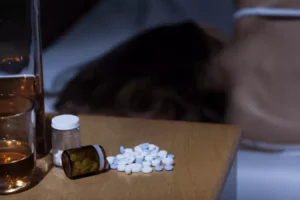
These results suggest that well-managed and governed recovery homes pose minimal risks to neighbors in terms of criminal behavior. Economic data also were supportive for participants in the Oxford House condition over the course of the two-year study. Oxford House participants earned roughly $550 more per month than participants in the usual care group. Annualizing this difference for the entire Oxford House sample corresponds to approximately $494,000 in additional benefits to those in the Oxford House condition.

What Are Sober Living Homes?
Too often, newly recovering alcoholics and drug addicts are faced with the necessity of living alone and of relying solely on contacts with Alcoholics Anonymous and Narcotics Anonymous to stay sober. Some are able to keep from drinking in spite of the loneliness with which they were faced. The alcoholic or drug addict alone begins to compare himself to those members of Alcoholics Anonymous and Narcotics Anonymous who still have family and friends. Loneliness and self-pity soon lead such individuals back to alcoholic drinking or drug use. With Oxford House there is no need for a recovering individual to live in an environment dominated by loneliness. Alcoholism and substance abuse affects over 20 million Americans, and thus Substance abuse is the most prevalent mental disorder facing our nation (Jason, Ferrari, Davis, & Olson, 2006).
- Both NIDA and NIAAA have health services research study sections that are willing to review these types of applications.
- Less than 4% of our sample with Hispanic, and this led us to examine possible reasons for this under-representation.
- We were also interested in exploring whether rates of crime increased in locations where there were Oxford Houses.
- Each Oxford House is managed by its residents, with each member having equal responsibilities and rights.
- During early recovery for alcoholism and drug addiction, some members had to leave an institution in order to make room for an alcoholic or drug addict just beginning the recovery process.
How much sobriety is needed?

Our research examined the nature and outcomes of the Oxford House model of substance abuse recovery. We worked with the needs of diverse groups, including ex-offenders, minority groups including what is an oxford house Native Americans, and women and women with children. We also designed a study to assess the types of contributions that Oxford House residents report making to their neighborhoods and communities.
Q. How many times has the average Oxford House resident been through residential treatment?
To learn more about different types of recovery housing and their accreditation, you can visit the National Association of Recovery Residences (NARR) website. An Oxford house provides recovering addicts a safe, substance-free place to live. Experience of Oxford House has shown that from 8 to 15 members works very well.

After the interview, the house members will decide if you’ll be allowed to move in by taking a vote. The average length of jail time is about one year, with a range of few days to more than ten years. This is understandable since as many as 80% of the current jail/prison population are alcoholics and drug addicts.
- Some of us had lived for a time in alcoholic and drug rehabilitation facilities.
- In 2007, the Oxford House organization received about $1.6 million in grants from state and local governments to pay outreach workers to develop and maintain networks of individual Oxford Houses in nine States and the District of Columbia.
- In addition, property values for individuals next to recovery homes were not significantly different from those living a block away.
- Plus, this option may actually be cheaper than other housing environments given the fact that residents split the household costs among several residents.
- That can be a good time to get to know future roommates and decide whether that particular house is best for you.
- Numerous studies have shown that most people who live in sober homes after attending treatment have low rates of relapse and are able to live productive lives.